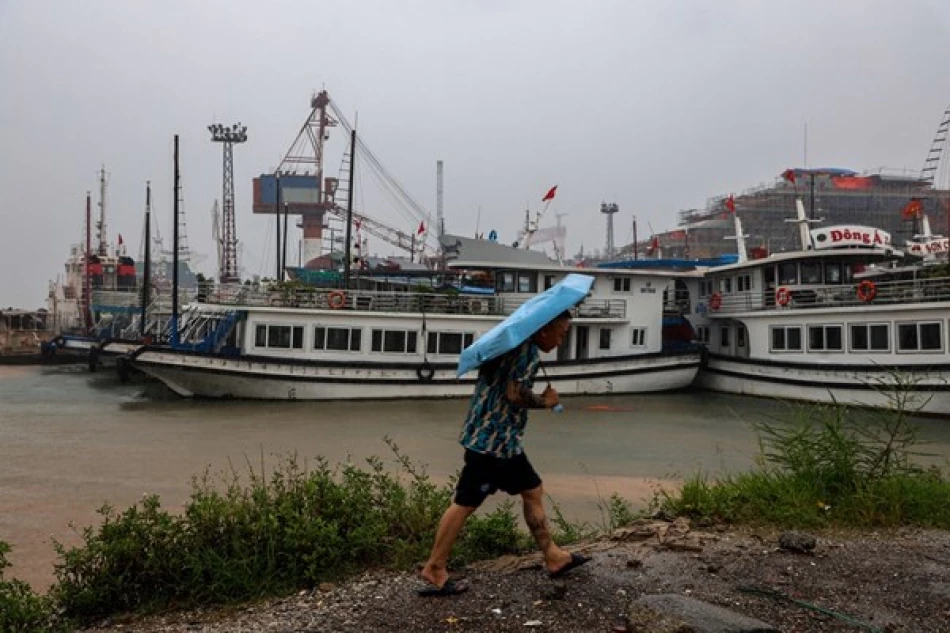
Powerful 'Vamco' Storm Slams Vietnam with Intense Winds and Heavy Rainfall
Tropical Storm Wiva Batters Northern Vietnam, Exposing Infrastructure Vulnerabilities in Key Economic Region
Tropical Storm Wiva struck northern Vietnam on Tuesday with devastating winds reaching 86 mph and torrential rains, forcing widespread business closures and flight cancellations across the country's most economically vital region. The storm's impact on Hanoi and surrounding industrial provinces highlights Vietnam's growing exposure to extreme weather events as climate change intensifies storm patterns in the South China Sea.
Storm's Path and Immediate Impact
Wiva made landfall at 10 AM local time with sustained winds between 40-63 mph, accompanied by thunderstorms that peaked at 86 mph. Originally classified as a hurricane while over open waters on Monday, the system weakened overnight before reaching Vietnam's coast and was downgraded to tropical storm status.
The storm moved southwest after landfall, causing immediate disruptions across northern and central regions. Power outages struck parts of Hung Yen province, east of Hanoi, while the capital's typically bustling streets emptied as residents heeded government warnings to shelter indoors.
Economic Disruption in Vietnam's Industrial Heartland
The timing and location of Wiva's impact carries significant economic implications. Northern Vietnam houses the country's political capital and key industrial zones that serve as manufacturing hubs for global supply chains. The closure of airports in coastal Hai Phong city and Quang Ninh province disrupted both domestic and international connectivity during a critical period for Vietnam's export-driven economy.
Infrastructure Under Pressure
Vietnamese authorities took proactive measures, advising residents to evacuate unstable buildings and flood-prone areas. This response reflects lessons learned from previous storms that have caused substantial casualties and economic losses. The government's emphasis on preemptive evacuation suggests improved disaster preparedness compared to past events, though the effectiveness will depend on execution and infrastructure resilience.
Regional Weather Patterns and Future Implications
Wiva's rapid intensification over open water before weakening near landfall follows a pattern increasingly common in the Western Pacific. This volatility makes storm prediction and preparation more challenging for coastal nations like Vietnam, which faces an average of 10-12 tropical storms annually.
The storm's southwest trajectory toward inland areas raises particular concern about flooding, as Vietnam's river systems and urban drainage infrastructure often struggle with sudden influxes of rainfall. Flood warnings issued by meteorological officials underscore the potential for secondary disasters that could extend the storm's impact well beyond the initial wind damage.
Broader Context for Southeast Asian Resilience
Vietnam's response to Wiva will likely influence regional approaches to storm preparedness as Southeast Asian nations grapple with intensifying weather patterns. Unlike more developed neighbors such as Singapore, which can rely on advanced infrastructure and financial resources, Vietnam must balance rapid economic growth with climate adaptation investments.
The storm's impact on one of Asia's fastest-growing economies serves as a reminder that climate resilience increasingly determines economic competitiveness in the region. How quickly Vietnam's northern provinces recover from Wiva's disruption will signal the country's readiness for future extreme weather events that scientists predict will become more frequent and intense.
Most Viewed News

 Layla Al Mansoori
Layla Al Mansoori






